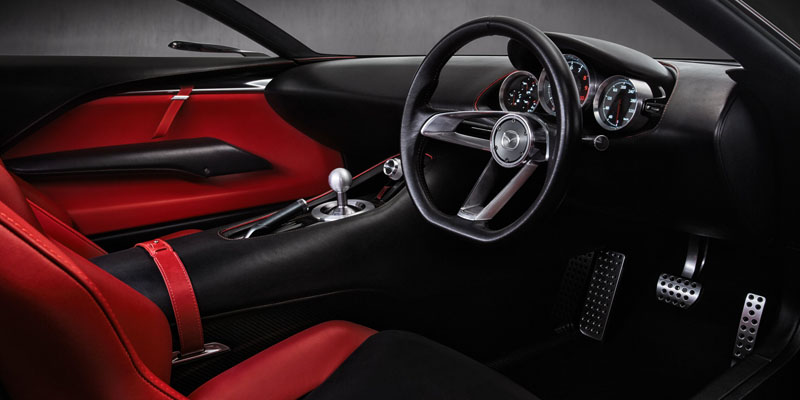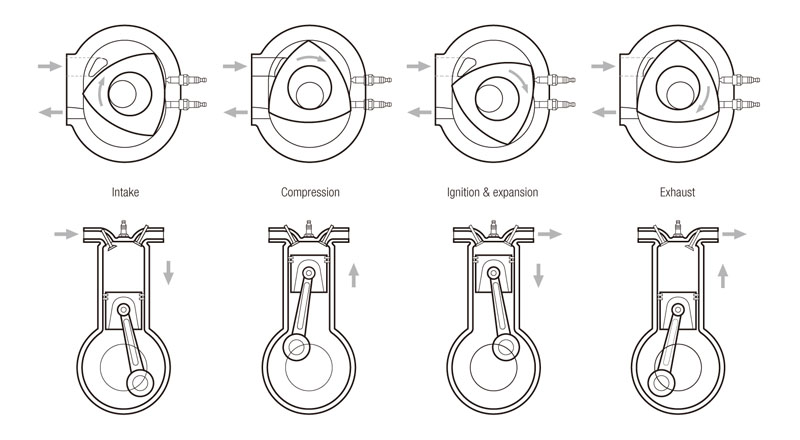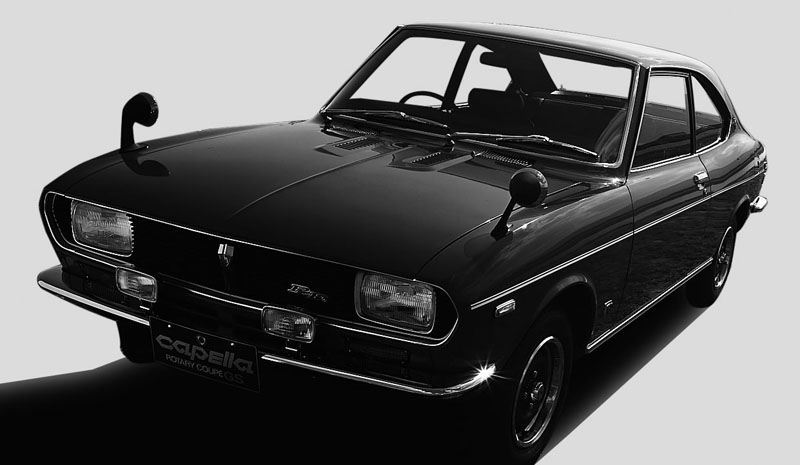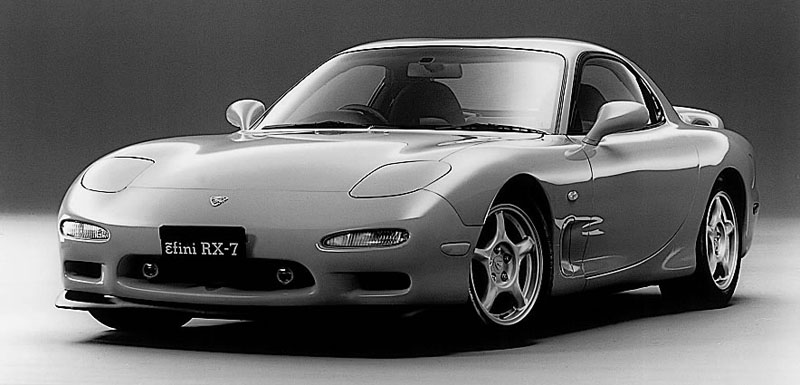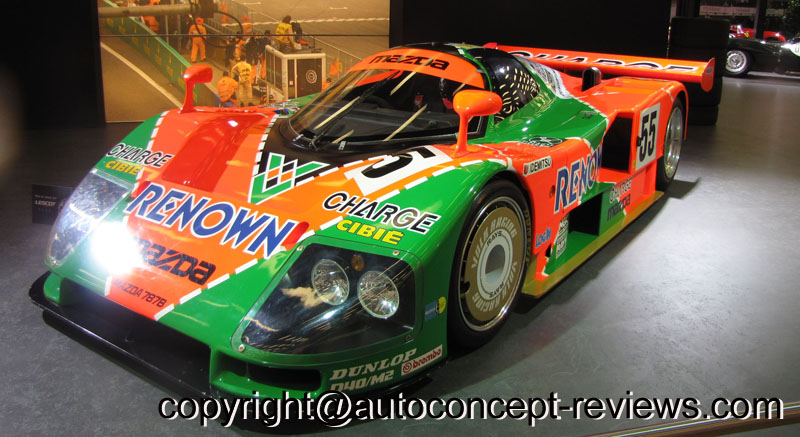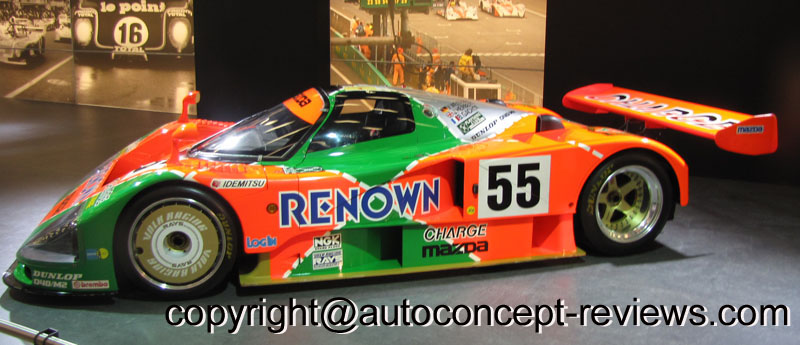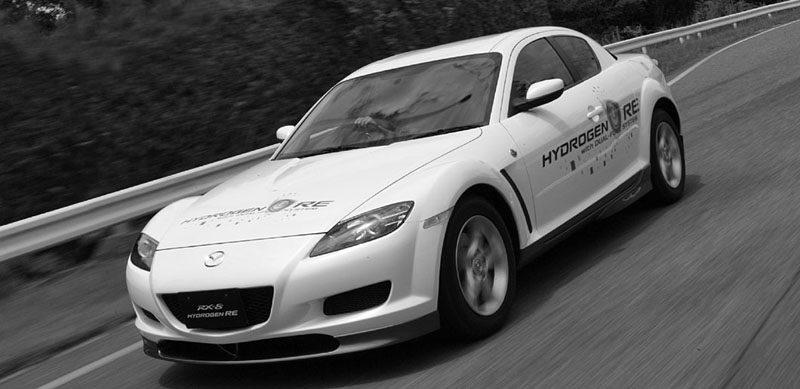Mazda RX-VISION Concept 2016 - Rotary engine
Mazda RX-VISION Rotary Sports Car Concept -A Vision of the Future that Harbors the Soul of the Mazda BrandMazda’s is committed to delivering true driving pleasure with every model, earning their cars a prized position in the affections of their customers and enriching their motoring lives. This motivates the company to continually defy convention and push the boundaries, building cars that match its unique vision. Mazda is the only carmaker in the world to successfully bring to market and mass-produce the rotary engine. It is a symbol of the company’s tirelessly challenging spirit and, as the soul of the Mazda brand, represents the unique and innovative technology that helped establish the brand and create a solid bond between Mazda and its customers. That is why, even though there are no rotary-powered cars in the current product line-up, rotary engine research and development continues today. The Mazda RX-VISION rotary sports car concept introduces the next-generation SKYACTIV-R rotary engine and Mazda’s vision of the ultimate in front-engine, rear-wheel-drive sports car styling. Making its world premiere in Tokyo, the RX-VISION represents an ideal of the future that harbors the soul of the Mazda brand. One-of-a-kind Proportions Born of KODO Design and the Rotary EngineThe RX-VISION adopts the beautiful proportions of a front-engined, rear drive sports car such as could only be envisioned by the principles of Mazda's KODO design philosophy. The styling is modern but maintains a sense of lineage and authenticity, encapsulating Mazda’s entire history of sports car design. A low and wide body, short overhangs, a taut cabin and a low overall height make the model immediately recognizable as a serious sports car. These elements combine with an incredibly low hood -made possible by the compact and lightweight next-generation SKYACTIV-R rotary engine- to create truly one-of-a-kind proportions. The design aim was to shave away all but the essentials, giving birth to the dynamic tension and ambience of a machine that is all business. The fine craftsmanship of Mazda’s renowned clay modelers have created reflections that convey motion, thereby capturing the spirit of the KODO design language without relying on character lines or other such elements. This is an elegant and highly vital form that subtly changes its appearance with even the slightest change of viewing angle. Weaving specific design motifs that reflect the history of Mazda sports cars into the styling of the RX-VISION reinforces the company’s unchanging passion for the sports car. A unique red body color features both energetic brightness and depth, highlighting the luster and contrast between light and shadow that encapsulates the RX-VISION design.
For the interior, the design team pursued an ultimately simple yet powerful image, fusing the tactility of painstakingly handcrafted work with a sophisticated, machined-finish ambience. Intricate instrumentation gives the cockpit a true mechanical appeal which, in combination with the simple instrument panel and genuine leather trim incorporating a saddle motif on the center tunnel, creates an interior atmosphere that speaks of handcrafted warmth and quality, yet maintains a sense of tension. The Next-generation SKYACTIV-R Rotary Engine Aims Towards the FutureCommitted to the creation of the ideal internal combustion engine, Mazda returned to the drawing board and built the SKYACTIV-G gasoline engine and SKYACTIV-D diesel engine from scratch. Despite production of the RX-8 ceasing in 2012, Mazda's research and development programmes to further evolve the rotary engine have continued uninterrupted. Reflecting the company’s ongoing resolve to apply the most advanced engineering and the same high aspirations that yielded SKYACTIV technology, this next-generation unit has been christened SKYACTIV-R. It represents Mazda's next significant step towards achieving a breakthrough in addressing three key rotary engine issues - fuel economy, emissions performance and reliability. Mazda will never stop challenging to deliver new rotary engines that provide its unique brand of driving pleasure.
Challenging the Impossible — The History of Rotary Engine Development
Mazda's rotary engine development history began in 1961. Emerging from the confusion of the postwar period, Japan's automotive industry was starting to expand. There were clear signs that competition was intensifying amongst car makers, and the pace of the industry’s reorganization and capital tie-ups increased rapidly. Within this environment, a late starter such as Mazda faced tough decisions as to how best to display its distinctive character if it were to maintain its independence. So, early discussions within the industry as to the potential of the rotary engine as dream technology for the future presented a golden opportunity. Tsuneji Matsuda, then president of Toyo Kogyo (which became Mazda), paid a personal visit to the headquarters of NSU Motorenwerke AG in West Germany, developer of the Wankel engine, where he signed a technical cooperation contract. Effectively gambling Mazda's corporate identity on one major engineering challenge, Matsuda-san's aim was to widely commercialise an unknown new technology, the mass-production of rotary-engined vehicles simultaneously establishing the company's global credentials as a unique, independent car maker boasting the very highest levels of technological prowess. However, the reality of rotary engine development was to prove extremely demanding. The team of 47 engineers in Mazda’s rotary engine research department faced innumerable challenges of considerable complexity; not least of which was the elimination of the chatter marks -also known as 'the devil’s nail marks'- etched on the inside walls of the rotor housing as the result of friction caused by the rotor turning at high speed. Refusing to compromise, the company's engineers doggedly resolved one technological challenge after another until, finally, on May 30th 1967, Mazda unveiled the Cosmo Sport - the world's first two-rotor rotary-engined production car and a new step forward in automotive history. The following year, the Cosmo Sport competed in the 1968 Marathon De La Route-an 84-hour endurance race staged at Germany’s famed Nürburgring. Completing the 3.5 day non-stop race and taking fourth place overall, Mazda's unique machine proved that the rotary engine not only delivered excellent performance but was also highly durable. The product of indomitable spirit, the Cosmo Sport reflected the unrelenting determination of Mazda's engineers to bounce back after each setback and overcome every obstacle. This same spirit lives on today as the company continues to tackle fresh challenges in the further evolution of the rotary engine. Evolution of the Rotary Engine Opens Roads to a New EraFollowing the launch of the Cosmo Sport in 1967, Mazda introduced a succession of rotary engine-powered cars, such as the Familia Rotary, Luce Rotary Coupe, RX-2 and RX-3. However, various events during this same period -such as the U.S. Congress passing the Clean Air Act Extension (the so-called “Muskie Act”) in 1970 and the 1973 oil crisis- led to increasing demands for better environmental performance and fuel economy, presenting Mazda with an entirely new range of technological challenges. Driven not only by the corporate responsibility born out of having successfully developed rotary engine technology for commercial automotive use, but also by a strong sense of loyalty to the company's burgeoning customer and fan base, Mazda's engineers once again rose to the challenge, significantly improving the engine's fuel economy and emissions performance. Launched in 1978, the Savanna RX-7 sports car rapidly became a big hit. With its appealing design and the uniquely powerful feel of its rotary engine, the RX-7 proved a popular motorsport choice, earning high acclaim as a sports car that delivered speed, durability and excellent fuel economy. The huge leap forward in fuel economy achieved under the Phoenix Project played no small part in the car's success, and, like the proverbial phoenix rising from the ashes, the RX-7 became symbolic of a come-back for the rotary engine. Rotary engine development continued to pursue the evolution of both power and fuel economy thereafter, with the implementation of turbocharging, the addition of a third rotor, and other advances introduced as a result of feedback from motorsports activities. In the late 1990s, with the company starting down a new path as a member of the Ford Group, the existence of the rotary engine was considered of immense symbolic importance to the restructured Mazda brand. In 2003, the company brought the new-generation RENESIS engine to market; a technological evolution that raised the rotary engine’s winning combination of compact size, light weight and high performance to the next level. Mazda combined the dynamic performance of the RENESIS engine with authentic sports car styling to give birth to the RX-8 -a fully-fledged, four-door, four-seat, rotary-engined sports car. History of Rotary Engine Development at Mazda
|
|||||||||||||||||||||||||||||||||||||||||||||||||||||||||||||||||||||||||||||||||||||||||||||||||||||||||||||||||||||||||||||||||||||||||||||||||||||||
|---|---|---|---|---|---|---|---|---|---|---|---|---|---|---|---|---|---|---|---|---|---|---|---|---|---|---|---|---|---|---|---|---|---|---|---|---|---|---|---|---|---|---|---|---|---|---|---|---|---|---|---|---|---|---|---|---|---|---|---|---|---|---|---|---|---|---|---|---|---|---|---|---|---|---|---|---|---|---|---|---|---|---|---|---|---|---|---|---|---|---|---|---|---|---|---|---|---|---|---|---|---|---|---|---|---|---|---|---|---|---|---|---|---|---|---|---|---|---|---|---|---|---|---|---|---|---|---|---|---|---|---|---|---|---|---|---|---|---|---|---|---|---|---|---|---|---|---|---|---|---|---|
|
||||||||||||||








